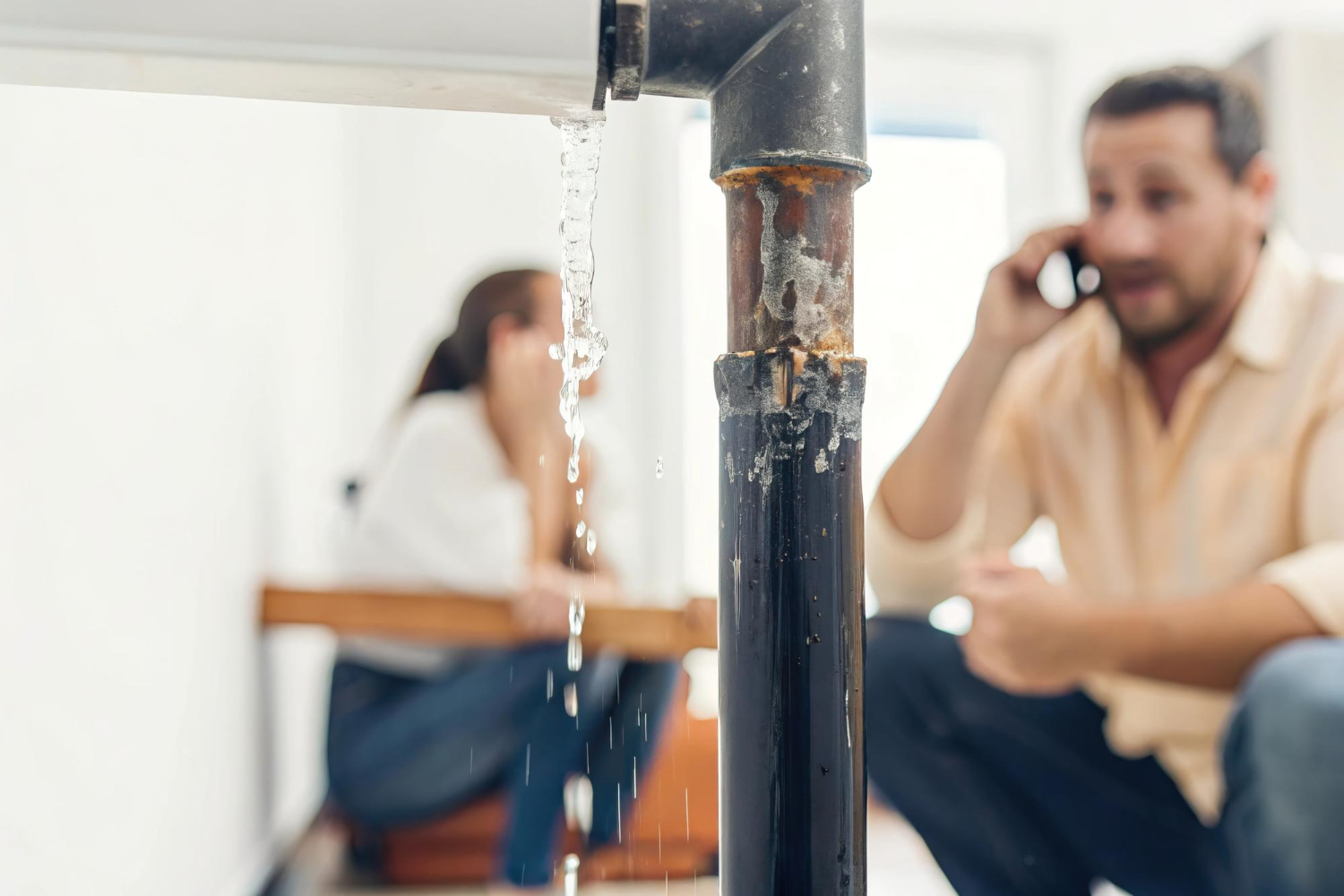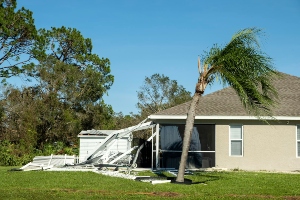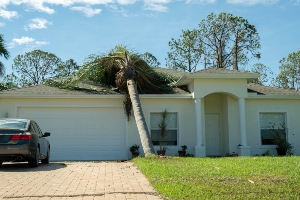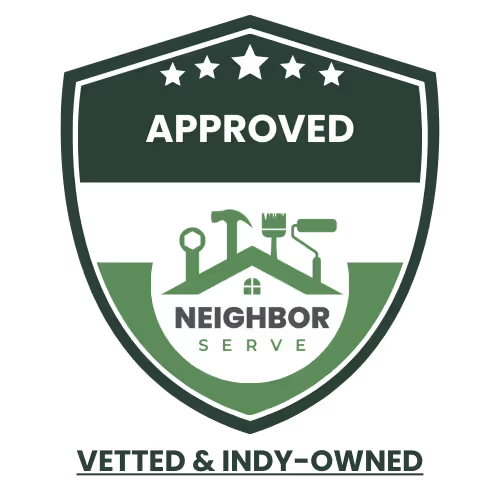Water leaks might seem like small problems at first, but they can quickly lead to big headaches. A dripping faucet or damp spot on the wall isn't just annoying, it can damage your home's structure, increase your water bill, and even create unhealthy mold.
The good news is that finding and fixing leaks early can save you from these costly issues. Spotting leaks quickly is your best defense against water damage.
Some leaks are obvious, like dripping faucets or toilet tanks that never stop running. Others hide behind walls or underground, showing up as mysterious damp spots, musty smells, or suddenly higher water bills. We'll show you how to find these sneaky leaks using simple methods that don't require professional tools.
Once you've found a leak, you'll need to decide whether to fix it yourself or call a professional. Some repairs are simple DIY projects that require just a few tools and basic skills. Others need expert attention to prevent further damage.
In this guide, we'll walk you through both spotting leaks and making smart decisions about repairs.
Here’s what you need to know.
- Common signs you might have a hidden plumbing leak
- Leak detection tips every homeowner should know
- When simple tests aren't enough: Professional leak detection tools
- Leak prevention advice to protect your plumbing long-term
Keep reading to learn essential leak detection tips to catch hidden plumbing problems before they cause major damage.
Common signs you might have a hidden plumbing leak
In 2009, 9.9% of U.S. homes had water damage from exterior leakage, while 8.1% had water damage from interior leakage based on data from the American Housing Survey of the U.S. Census.
Hidden plumbing leaks can cause serious damage to your home before you even notice them. Learning to spot the warning signs early can save you thousands in repairs and prevent potential health hazards.
Unexpected spike in your water bill
One of the most reliable indicators of a hidden leak is a sudden increase in your water bill without any change in your water usage habits. If your bill jumps 20% or more from one month to the next, it's time to investigate.
Check for consistency by comparing your current bill with the same month from last year. Seasonal changes are normal, but unexplained increases aren't.
Even small leaks can waste significant amounts of water. A dripping faucet can waste up to 3,000 gallons per year, while a silent toilet leak might waste 200 gallons daily.
We recommend reviewing your water bill monthly rather than just paying it automatically. This practice helps you spot problems early before they become expensive disasters.
Damp walls, ceilings, or floors with no clear source
Water stains, discoloration, or warping on walls, ceilings, or floors often indicate a hidden plumbing leak. These signs might appear as yellowish-brown spots, bubbling paint, or sagging drywall.
Pay special attention to areas around bathrooms, kitchens, and laundry rooms where plumbing is concentrated. Check baseboards and corners where walls meet floors.
Feel for soft spots or sponginess in walls and floors. These indicate water damage has already compromised structural materials.
Look for cracked or loose tiles in bathrooms, as water can seep underneath and cause damage to subfloors. Buckling hardwood or laminate flooring is another warning sign that needs immediate attention.
Musty odors or visible mold patches
Persistent musty smells often indicate hidden moisture that's creating the perfect environment for mold growth. These odors may be strongest in bathrooms, kitchens, or basements but can spread throughout your home.
Visible mold appears as black, green, or white spots and can develop within 24-48 hours of water exposure. It commonly forms in corners, behind furniture, or along baseboards.
Mold isn't just unsightly—it poses serious health risks. It can trigger allergic reactions, respiratory problems, and other health issues, especially for children, elderly people, and those with compromised immune systems.
If you spot mold or detect musty odors, don't ignore them. These signs almost always indicate excess moisture from a leak that needs addressing immediately.
Water meter still running with all faucets off
Your water meter can be your best tool for detecting hidden leaks. Here's a simple test we recommend:
- Turn off all water-using appliances and fixtures in your home
- Locate your water meter (typically near the street or in the basement)
- Check the leak indicator—a small triangle or dial that moves when water flows
- If it's moving when all water is off, you likely have a leak
For a more thorough check, note the meter reading, use no water for 2 hours, then check again. Any change indicates a leak.
Digital meters make this even easier, as they can detect even tiny leaks. Some modern meters connect to smartphone apps that alert you to unusual water usage patterns.
Leak detection tips every homeowner should know
Finding water leaks early can save you thousands in repair costs and prevent serious damage to your home. Water leaks often hide in plain sight, but with the right techniques, you can spot them before they become major problems.
The U.S. EPA’s WaterSense program reports that 10% of homes have leaks that waste 90 gallons or more per day, with average household leaks accounting for nearly 10,000 gallons of water wasted annually, highlighting why actionable leak detection tips can translate into significant savings
How to check your toilets, faucets, and fixtures
Toilets are common sources of hidden leaks that can waste hundreds of gallons per day. Check the flapper valve by looking for water that continues to run after flushing. Inspect the tank components for cracks or deterioration that might cause leaks.
For faucets, examine the base and under-sink connections for moisture. Even small drips can add up to significant water waste over time.
Inspect showerheads for leaks where they connect to the pipe. A leaking showerhead might need a new washer or sealant.
Don't forget other fixtures like washing machines and dishwashers. Look for puddles or dampness around these appliances. Check their connection hoses regularly for cracks or bulging that might indicate weakness.
Using food coloring to test for silent toilet leaks
Silent toilet leaks can go unnoticed for months. The food coloring test is a simple but effective detection method.
How to perform the test:
- Remove the toilet tank lid
- Add 10-15 drops of food coloring to the tank water
- Wait 15-20 minutes without flushing
- Check the toilet bowl for colored water
If you see colored water in the bowl, you have a leak. The most likely culprit is a worn flapper valve that's not sealing properly.
This test should be done periodically as part of your home maintenance routine. We recommend checking each toilet in your home at least twice a year to catch problems early.
Listening for sounds behind walls and under floors
Water leaks often make distinctive sounds that can help you locate them. Turn off all water-using appliances and listen carefully throughout your home.
Hissing or rushing sounds behind walls might indicate a pressurized pipe leak. Pay special attention near bathrooms and kitchens where most plumbing is concentrated.
Dripping sounds can reveal slow leaks that might otherwise go unnoticed. These are often most audible at night when the house is quiet.
Under floors, listen for unusual sounds when walking. Soft spots or warping in flooring can indicate water damage from a hidden leak below.
Use a screwdriver as a makeshift stethoscope by placing the metal end against pipes and the handle against your ear to amplify subtle sounds.
When simple tests aren't enough: Professional leak detection tools
Sometimes DIY methods just don't cut it when hunting down sneaky leaks. Professional plumbers use specialized equipment that can find problems hidden inside walls, under concrete, or buried in your yard without causing damage to your property.
Acoustic sensors, thermal imaging, and pressure testing
Acoustic sensors work like super-powered stethoscopes that amplify the sound of water escaping from pipes. These devices can detect the distinct hissing or rushing noise of a leak, even when it's hidden behind walls or under floors. They're extremely precise and can pinpoint the exact location of the problem.
Thermal imaging cameras reveal temperature differences that indicate water leaks. These cameras show cool spots where water is present but shouldn't be. Pros use these to scan entire rooms quickly without any demolition.
Pressure testing involves sealing off sections of plumbing and adding measured pressure. If pressure drops, there's a leak. This method works great for confirming leaks when visual evidence is absent.
Pro equipment advantages:
- Non-invasive detection
- Accuracy within inches
- Fast results
- Minimal property damage
Slab leak detection without tearing up your floors
Slab leaks occur when pipes beneath concrete foundations break or corrode. These are particularly tricky because they can cause serious structural damage if left unchecked.
Professional detection combines multiple technologies to locate these hidden problems. First, acoustic equipment listens for the sound of water escaping. Then, moisture meters confirm the presence of water in the concrete.
Ground-penetrating radar helps visualize what's happening under the slab without breaking concrete. This technology creates images of pipes and surrounding areas to identify exact leak locations.
Modern equipment means we can often fix slab leaks with minimal disruption. Techniques like pipe relining or rerouting can sometimes solve the problem without removing large sections of flooring.
How pros pinpoint underground leaks fast
Underground leaks waste water, increase bills, and can damage foundations or landscaping. Professional detection makes finding them much more efficient.
Line locators use electromagnetic signals to map underground pipes. This creates a clear picture of your plumbing system layout before starting more detailed searches.
Gas detection helps with certain types of leaks. When harmless tracer gases are introduced to the system, specialized sensors can detect exactly where they escape from the pipe.
Video inspection cameras thread through pipes to visually inspect from the inside. These waterproof cameras with LED lights can travel hundreds of feet, sending back real-time video that reveals cracks, breaks, or intrusion from tree roots.
The best professionals combine these technologies based on your specific situation, saving time and preventing unnecessary excavation.
Leak prevention advice to protect your plumbing long-term
Preventing leaks before they happen saves both money and stress. A few simple maintenance steps can extend the life of your plumbing system and help you avoid emergency repairs.
Seasonal inspections before winter and summer
Every home needs specific plumbing attention as seasons change. Before winter arrives, disconnect and drain all outdoor hoses to prevent freezing. Insulate exposed pipes in unheated areas like basements, attics, and crawl spaces with foam pipe insulation.
Check for pipes that might be vulnerable to freezing temperatures. These often include those along exterior walls or in unheated spaces. Sealing cracks and openings near pipes can prevent cold air from causing freezes.
Before summer, inspect your irrigation system for damage from winter freezing. Look for wet spots in your yard that might indicate underground leaks.
We recommend testing your water pressure each season. High pressure strains pipes and joints. If your pressure exceeds 60 PSI, consider installing a pressure regulator.
Replacing old pipes, joints, and corroded fittings
Aging plumbing systems need special attention. Pipes over 20 years old may be at higher risk for failure, especially if they're made of materials like galvanized steel or polybutylene.
Watch for signs of corrosion like discolored water, flaking on pipe surfaces, or green stains on copper pipes. These indicate deterioration that could lead to leaks.
Replace visible corroded fittings before they fail. Pay special attention to joints and connections, as these are common failure points.
Consider upgrading to modern materials like PEX or copper when replacing sections of plumbing. These materials last longer and resist corrosion better than older options.
Installing a water softener can prevent mineral buildup that damages pipes over time, especially if you have hard water in your home.
Why regular plumbing checkups with Michaelis can save you thousands
Professional inspections catch problems before they become emergencies. At Michaelis, we use specialized equipment to detect hidden leaks and weak points in your plumbing system.
Our plumbing checkups include:
- Video pipe inspections to spot internal damage
- Pressure testing to identify weak points
- Water quality testing to detect corrosion issues
- Complete examination of fixtures, joints, and visible pipes
Regular maintenance costs far less than emergency repairs. A single burst pipe can cause $5,000-$10,000 in water damage, while preventive inspections typically cost $150-$300.
We can identify pipes approaching the end of their lifespan before they fail. This allows you to budget for replacements rather than facing unexpected expenses during a crisis.
Conclusion
Finding and fixing leaks quickly can save you money and prevent serious damage to your home. Remember to regularly check for unusual water sounds, damp spots, and unexpectedly high water bills.
For minor leaks, DIY solutions like tightening connections or replacing washers might be enough. Always turn off your water supply before attempting any repairs.
Don't hesitate to call a professional plumber for complex issues. They have the right tools and expertise to handle difficult leaks safely and effectively.
Regular maintenance is key to preventing future leaks. Inspect your plumbing systems seasonally and address small problems before they become major headaches.
We recommend keeping basic plumbing tools on hand for emergencies. A pipe wrench, plumber's tape, and a few replacement parts can help you manage sudden leaks until professional help arrives.
Water leaks don't have to be a disaster when caught early. Stay vigilant and take quick action when you spot the signs of trouble.
Schedule a plumbing inspection with our team to spot hidden leaks early and prevent costly water damage in your home.




.avif)

